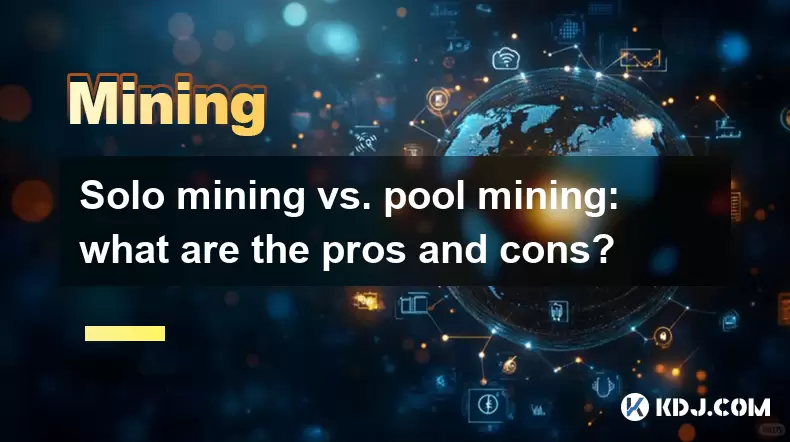-
 Bitcoin
Bitcoin $114200
0.00% -
 Ethereum
Ethereum $3637
0.56% -
 XRP
XRP $2.950
-2.01% -
 Tether USDt
Tether USDt $0.9999
0.02% -
 BNB
BNB $761.0
0.55% -
 Solana
Solana $164.1
-1.38% -
 USDC
USDC $0.9999
0.02% -
 TRON
TRON $0.3332
0.36% -
 Dogecoin
Dogecoin $0.2012
-0.52% -
 Cardano
Cardano $0.7261
-1.41% -
 Hyperliquid
Hyperliquid $37.62
-2.13% -
 Stellar
Stellar $0.3930
-2.65% -
 Sui
Sui $3.441
-0.16% -
 Bitcoin Cash
Bitcoin Cash $563.8
0.70% -
 Chainlink
Chainlink $16.50
0.09% -
 Hedera
Hedera $0.2424
-0.14% -
 Ethena USDe
Ethena USDe $1.001
0.01% -
 Avalanche
Avalanche $22.20
0.00% -
 Litecoin
Litecoin $118.0
-2.48% -
 UNUS SED LEO
UNUS SED LEO $8.991
0.12% -
 Toncoin
Toncoin $3.195
-3.87% -
 Shiba Inu
Shiba Inu $0.00001217
0.12% -
 Uniswap
Uniswap $9.674
-0.21% -
 Polkadot
Polkadot $3.633
1.00% -
 Monero
Monero $295.3
-0.82% -
 Dai
Dai $0.9999
0.00% -
 Bitget Token
Bitget Token $4.321
-0.41% -
 Cronos
Cronos $0.1392
0.73% -
 Pepe
Pepe $0.00001027
-0.89% -
 Aave
Aave $258.5
0.32%
what is cryptocurrency mining and how bitcoin mining works
Bitcoin mining uses powerful computers to solve complex problems, earning miners newly minted Bitcoin and transaction fees. Mining difficulty adjusts to maintain a consistent block generation rate, and specialized ASICs are now essential, often requiring pools to be profitable. However, high energy consumption raises environmental concerns.
Mar 25, 2025 at 08:28 pm

Key Points:
- Cryptocurrency mining is the process of verifying and adding transaction blocks to a blockchain.
- Bitcoin mining uses powerful computers to solve complex mathematical problems.
- Miners are rewarded with newly minted Bitcoin and transaction fees.
- Mining difficulty adjusts to maintain a consistent block generation rate.
- Specialized hardware (ASICs) is now essential for competitive Bitcoin mining.
- Mining pools allow individuals to combine their computing power.
- Environmental concerns related to energy consumption are a significant challenge.
What is Cryptocurrency Mining?
Cryptocurrency mining is the backbone of many blockchain networks, including Bitcoin. It's a decentralized process that validates and secures transactions by adding them to a public, distributed ledger. Miners essentially act as the network's security guards, ensuring the integrity and immutability of the blockchain. This process is computationally intensive and requires significant resources.
How Bitcoin Mining Works: A Detailed Look
Bitcoin mining involves solving complex cryptographic puzzles. These puzzles are designed to be incredibly difficult to solve, requiring immense computing power. The first miner to solve the puzzle gets to add the next block of transactions to the blockchain. This block contains a record of all the validated transactions within a specific time period.
The Mining Process:
- Miners download the Bitcoin blockchain.
- They use specialized hardware (ASICs) to solve cryptographic hash functions.
- The first miner to find a solution broadcasts it to the network.
- Other miners verify the solution.
- If valid, the block is added to the blockchain, and the miner receives a reward.
The Reward System:
Miners are incentivized by two primary rewards: newly minted Bitcoin and transaction fees. The reward for creating a new block is programmed into the Bitcoin protocol and halves approximately every four years. Transaction fees are paid by users to prioritize their transactions, further incentivizing miners to process them quickly and efficiently.
Mining Difficulty and its Adjustment:
The difficulty of solving the cryptographic puzzles adjusts automatically to maintain a consistent block generation rate, typically around one block every ten minutes. If many miners join the network, the difficulty increases; if fewer miners participate, it decreases. This ensures the network remains secure and reliable, regardless of the number of miners.
Specialized Hardware: ASICs
Initially, CPUs and GPUs were sufficient for Bitcoin mining. However, as the network grew and the difficulty increased, specialized hardware called Application-Specific Integrated Circuits (ASICs) became necessary. ASICs are designed specifically for Bitcoin mining and offer significantly higher hashing power than CPUs or GPUs. This makes them the dominant hardware choice for competitive mining.
Mining Pools: Combining Power
Due to the increasing difficulty, individual miners often find it challenging to profitably mine Bitcoin alone. Mining pools allow miners to combine their computing power, sharing the rewards proportionally to their contribution. This increases the chances of solving a block and earning a reward, even with relatively modest hardware.
Environmental Concerns:
Bitcoin mining's energy consumption is a growing concern. The extensive computing power required results in significant electricity usage, raising questions about its environmental impact. Efforts are being made to transition to more sustainable energy sources for Bitcoin mining, but this remains a significant challenge.
Understanding Hashing and Blockchains:
Bitcoin mining relies heavily on cryptographic hashing algorithms. These algorithms take input data and produce a unique, fixed-size output, known as a hash. The Bitcoin network uses a specific hashing algorithm (SHA-256) to ensure the integrity of the blockchain. The blockchain itself is a chain of blocks, each containing a set of validated transactions and linked to the previous block via its hash.
The Role of Proof-of-Work:
Bitcoin employs a consensus mechanism called Proof-of-Work (PoW). This means miners must expend computational effort (work) to solve the cryptographic puzzles and validate transactions. PoW secures the network by making it computationally infeasible for malicious actors to alter the blockchain.
Future of Bitcoin Mining:
As Bitcoin's price and network difficulty fluctuate, the profitability of mining changes. Technological advancements, such as more efficient ASICs and the adoption of renewable energy sources, will likely influence the future landscape of Bitcoin mining.
Frequently Asked Questions:
Q: Is Bitcoin mining profitable?
A: Profitability depends on several factors, including the Bitcoin price, electricity costs, hardware costs, mining difficulty, and the size of your mining operation. Currently, solo mining is generally unprofitable for most individuals due to the high difficulty. Joining a mining pool can improve profitability but still involves significant upfront investment and ongoing expenses.
Q: Can I mine Bitcoin on my home computer?
A: While technically possible, mining Bitcoin on a home computer is highly unlikely to be profitable. The computing power required is far beyond the capabilities of typical consumer hardware, and you would likely spend more on electricity than you would earn in Bitcoin.
Q: What hardware do I need to mine Bitcoin?
A: For competitive Bitcoin mining, you need specialized ASIC miners. These are significantly more powerful than CPUs or GPUs and are specifically designed for solving the cryptographic puzzles used in Bitcoin mining.
Q: What are the risks associated with Bitcoin mining?
A: Risks include the volatility of Bitcoin's price (affecting profitability), the cost of hardware and electricity, the potential for hardware malfunctions, and the increasing difficulty of mining, which can render existing equipment obsolete. Furthermore, regulations around cryptocurrency mining can vary significantly by location.
Disclaimer:info@kdj.com
The information provided is not trading advice. kdj.com does not assume any responsibility for any investments made based on the information provided in this article. Cryptocurrencies are highly volatile and it is highly recommended that you invest with caution after thorough research!
If you believe that the content used on this website infringes your copyright, please contact us immediately (info@kdj.com) and we will delete it promptly.
- Ethereum, Transaction Volumes, and SEC Staking: Navigating the Regulatory Landscape
- 2025-08-06 22:30:13
- Crypto, Tokens, and Metrics: Navigating the New Frontier
- 2025-08-06 23:09:22
- Crypto Market Buzz: PROVE Surges as Coinbase, Binance List Token
- 2025-08-06 22:30:13
- BlockSack Who? Base Network and Layer 2s Shake Up the Crypto Scene
- 2025-08-06 23:10:13
- Brazil, Bitcoin, Hearing Date: Is Brazil About to Embrace Bitcoin?
- 2025-08-06 20:30:38
- Stabull DEX on Base Chain: A New Era for Stablecoins?
- 2025-08-06 20:47:53
Related knowledge

What are the differences between mining on Windows vs. Linux?
Aug 06,2025 at 11:29pm
Overview of Cryptocurrency Mining PlatformsCryptocurrency mining involves using computational power to solve complex cryptographic puzzles and validat...

How to build a mining rig inside a PC case?
Aug 06,2025 at 11:01pm
Understanding the Basics of a Mining Rig in a PC CaseBuilding a mining rig inside a PC case involves transforming a standard computer chassis into a d...

How to use a server PSU for a crypto mining rig?
Aug 06,2025 at 08:39pm
Understanding Server PSUs and Their Relevance to Crypto MiningCrypto mining rigs demand stable, high-wattage power supplies to run multiple GPUs effic...

Solo mining vs. pool mining: what are the pros and cons?
Aug 06,2025 at 08:15pm
Understanding Solo Mining in CryptocurrencySolo mining refers to the process where an individual miner attempts to solve a block on their own without ...

What was the highest APY for IRON mining?
Jul 23,2025 at 05:14am
Understanding IRON Token and Its Mining MechanismThe IRON token is a stablecoin that operates within the Iron Finance ecosystem, primarily on blockcha...

What is impermanent loss in IRON pools?
Jul 23,2025 at 09:00am
Understanding Impermanent Loss in the Context of IRON PoolsImpermanent loss is a phenomenon that affects liquidity providers in decentralized finance ...

What are the differences between mining on Windows vs. Linux?
Aug 06,2025 at 11:29pm
Overview of Cryptocurrency Mining PlatformsCryptocurrency mining involves using computational power to solve complex cryptographic puzzles and validat...

How to build a mining rig inside a PC case?
Aug 06,2025 at 11:01pm
Understanding the Basics of a Mining Rig in a PC CaseBuilding a mining rig inside a PC case involves transforming a standard computer chassis into a d...

How to use a server PSU for a crypto mining rig?
Aug 06,2025 at 08:39pm
Understanding Server PSUs and Their Relevance to Crypto MiningCrypto mining rigs demand stable, high-wattage power supplies to run multiple GPUs effic...

Solo mining vs. pool mining: what are the pros and cons?
Aug 06,2025 at 08:15pm
Understanding Solo Mining in CryptocurrencySolo mining refers to the process where an individual miner attempts to solve a block on their own without ...

What was the highest APY for IRON mining?
Jul 23,2025 at 05:14am
Understanding IRON Token and Its Mining MechanismThe IRON token is a stablecoin that operates within the Iron Finance ecosystem, primarily on blockcha...

What is impermanent loss in IRON pools?
Jul 23,2025 at 09:00am
Understanding Impermanent Loss in the Context of IRON PoolsImpermanent loss is a phenomenon that affects liquidity providers in decentralized finance ...
See all articles

























































































